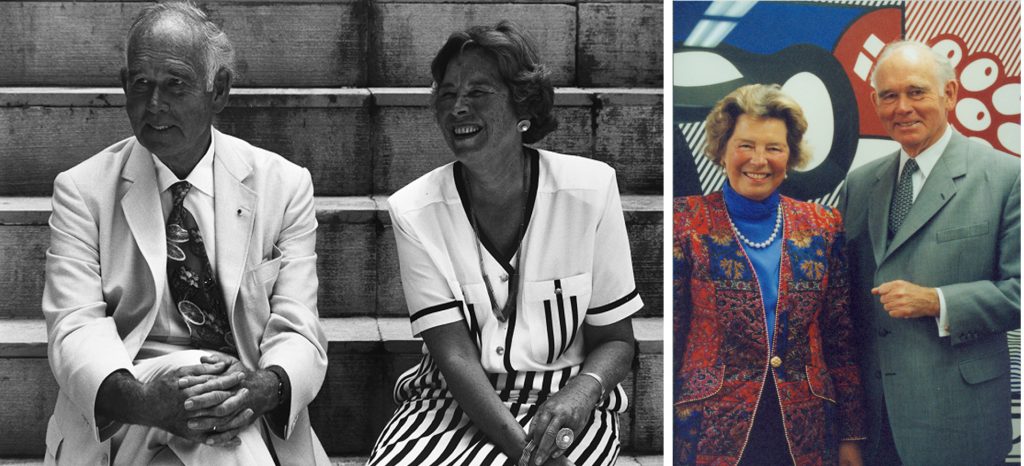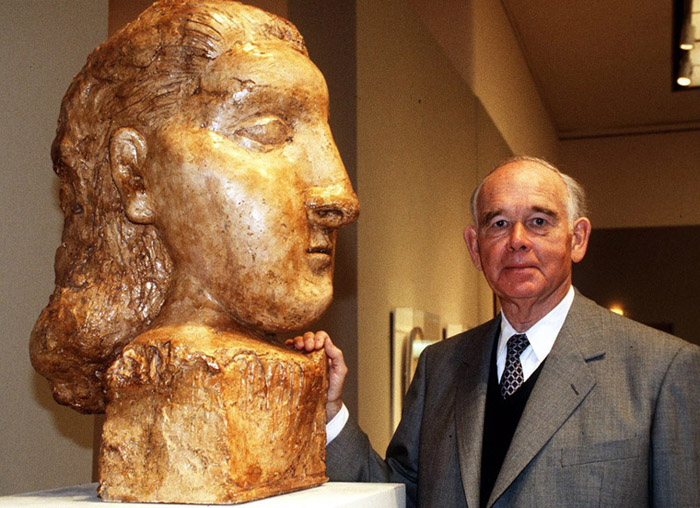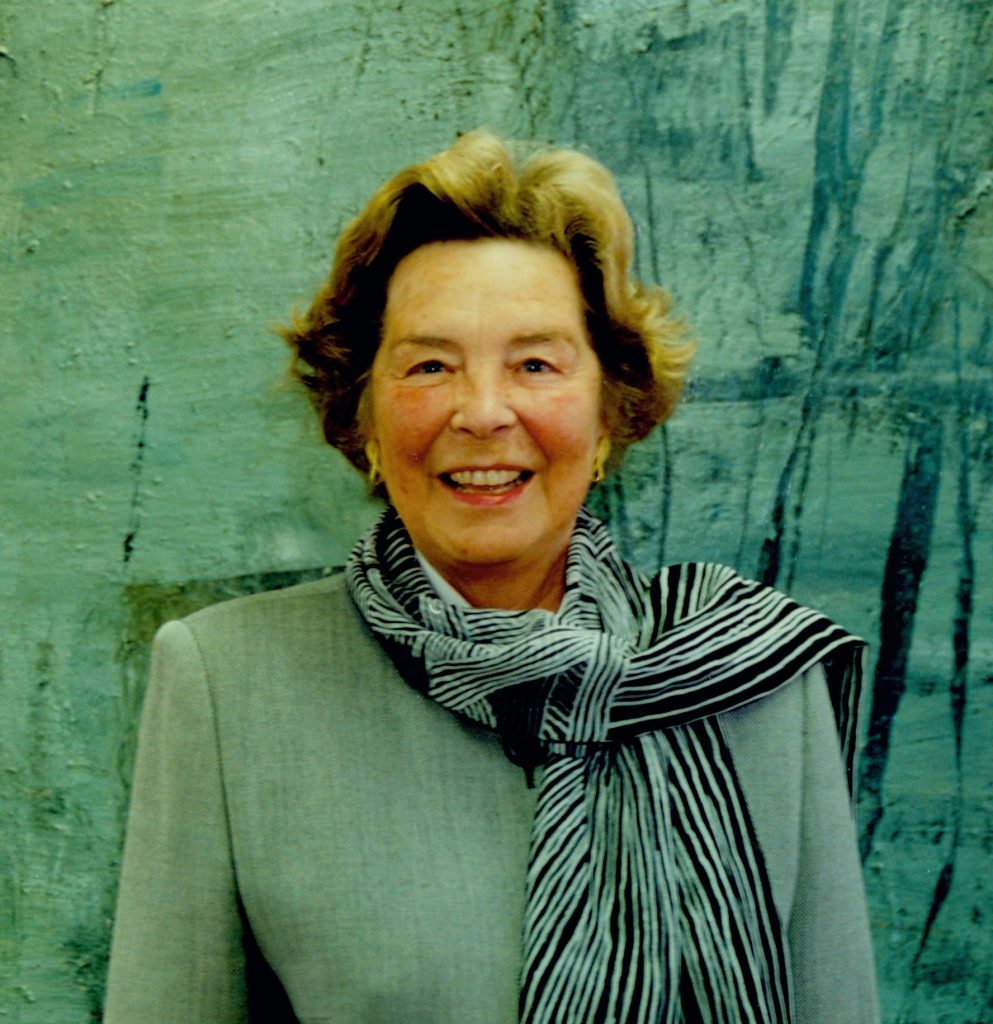The Collectors: Peter and Irene Ludwig
The Ludwig Museum in Koblenz is not only one of the twelve international museums initiated by the collector couple Peter and Irene Ludwig. Since its opening in September 1992, it has distinguished itself as a museum for contemporary art and, in particular, maintains an active dialogue with the French art scene. It was the vision of the two collectors that in Koblenz – Peter Ludwig’s hometown – with its almost 300-year history with France, a place should be created where important impulses from both countries can be developed and unfolded.

The Ludwig Collection
The enormous Ludwig Collection, which numbers over 12,000 art objects, was a joint effort by Irene and Peter Ludwig from the very beginning. Objects from antiquity and the Middle Ages, art objects from Chinese, Indian, African and pre-Columbian art can be found here alongside works of art from the Baroque and Rococo eras. At the beginning of the 1960s, the Ludwigs focused their passion for collecting on masterpieces of contemporary art, culminating in American Pop Art and the glittering Picasso collection.
Beginning in 1957, the Ludwigs began to place their collecting activities at the service of the public and successively loaned selected collections and works of art to museums and institutions. Irene Ludwig and her husband Peter are therefore still considered Germany’s most important art collector couple. Today, their loans and donations can be found in over 30 museums, twelve of which bear the Ludwig name, including those in Cologne, Budapest, Havana, St. Petersburg, Vienna and Beijing. As studied art historians, Peter and Irene Ludwig knew how to set new priorities and accents: Among the outstanding pieces in the Ludwig Collection are masterpieces of the Soviet avant-garde at the beginning of the 20th century and of 1960s Pop Art, which first became popular in Europe thanks to the couple.

Peter Ludwig
Professor Dr. Dr. h.c. mult. Peter Ludwig (born July 9, 1925 in Koblenz, died 1996 in Aachen) was a trained lawyer and art historian. After studying art history, archaeology, history and philosophy at the University of Mainz, Peter Ludwig submitted his dissertation entitled “Das Menschenbild Picassos als Ausdruck eines generational bedingten Lebensgefühls” (Picasso’s Image of Man as an Expression of a Generationally Conditioned Attitude to Life) in 1950 and was awarded a doctorate. He married fellow student Irene Monheim in 1951, which also marked the beginning of Peter Ludwig’s successful career in the Monheim family business, production site of the well-known Trumpf Schokolade, later also known as “Ludwig Schokolade”. Due to his great skill and enormous economic know-how, he was able to buy up numerous chocolate companies over the years and increase production and sales many times over.
Peter Ludwig began his activity as an art collector and patron in 1957. As early as 1952, Peter Ludwig belonged to the Aachen Casino Club. In 1957, he finally became chairman of the Aachen Museum Society and began cooperating with museums in Cologne and Aachen. He also became involved in other museum associations. In addition, he made various donations and founded both museums and institutions: From 1976 until his death in 1996, the Ludwig collector couple founded more than twelve museums and institutions worldwide, located in Aachen, Bamberg, Basel, Budapest, Koblenz, Cologne, Oberhausen, Beijing, Saarlouis, Saint Petersburg, and Vienna, among others.
Irene Ludwig
Together with Peter Ludwig, she built up the magnificent, multi-layered collection and meticulously documented each of her acquisitions. Until the end of her life, Irene Ludwig looked after the collections, which had been made accessible to the public by her and her husband, also scientifically. Irene Ludwig was vividly interested in the work of the museums she initiated. She advised and helped with numerous acquisitions.
Irene Ludwig received many awards, including the title of Professor in 1978 by the Austrian President Rudolf Kirchschläger, and the Order of Merit of the Federal Republic of Germany.
After Peter Ludwig’s death in 1996, Irene Ludwig established the “Peter and Irene Ludwig Foundation” based in Aachen. The municipal and state museums as well as institutions are in close cooperation with the “Peter and Irene Ludwig Foundation”. Also the “Fondatión Ludwig de Cuba” and the donation of more than 140 works of contemporary art to the “National Museum of China” (Beijing), are among the partners within the Ludwig Foundation, which were established with the support of Irene Ludwig.

Foundation of the Ludwig Museum in the Deutschherrenhaus in Koblenz.
Based on the decision of the Board of Trustees of the founding commission, which included Peter Ludwig as well as the then Lord Mayor of the City of Koblenz, the museum’s collection and exhibition policy shapes an important exchange with neighboring France. In addition, the museum’s activities have been steadily expanded and extended through international exhibition projects, significant acquisitions and moderate donations. The focus of the collection is on contemporary French art.
The Ludwig Museum in Koblenz benefits from its connection to the Peter and Irene Ludwig Foundation in terms of content, as well as its collection holdings in numerous national and international museums. In this respect, the exhibitions that the museum realizes are also part of a polyphonic dialogue that, on the one hand, refers to its own collection and, on the other hand, highlights a number of important individual positions. The museum sees itself as an important mediator for French institutions and research institutes, is at the same time open to the numerous inquiries from home and abroad, and does its utmost to promote research into contemporary positions.

Other museums that do not bear the Ludwig name also have loans from the Ludwig Collection:
Couven-Museum, Aachen
Grafik Museum Stiftung Schreiner, Bad Steben
Erstes deutsches Fliesenmuseum, Boizenburg
Kunstmuseum Basel, Basel
Hetjens-Museum, Düsseldorf
Staatliche Museen, Kassel
Mittelrhein-Museum, Koblenz
Museum Schnütgen, Köln
Rautenstrauch-Joest-Museum, Köln
Museum für Ostasiatische Kunst, Köln
Museum für Angewandte Kunst Köln, Köln
Museum der bildenden Künste, Leipzig
Germanisches Nationalmuseum, Nürnberg
